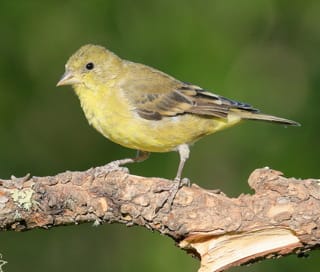Initially this guide displays common birds of all types that are flying right now in our area. Use the selectors below to view rare birds, view birds flying any time, restrict the output to a certain shape of bird, or search by name.
New Mexico is on the western edge of the Central Flyway which is one of the major migration pathways between north and south for birds traveling between breeding and wintering grounds along the Rocky Mountains. This has resulted in the state having an incredible diversity of birds with over 550 different species reported. A little more than half of this number are sighted annually on the Pajarito Plateau. Some of these birds are full-time residents, some migrate here for a few weeks or months, and other are only seen briefly as they pass through the region.
This guide features many of the birds known to frequent Los Alamos county by when they are likely to be seen in the area. You can get additional information on local birds by joining PEEC Birders or going to the eBird website. eBird also includes lists of rare bird sightings and birding hot spots.
Bird References
Birdweb
Cornell Lab of Ornithology
eBird
eNature
Institute for Bird Populations
National Audubon Society
New Mexico Ornithology Society
What Bird
xeno-canto
Subject Area Experts (all guides)
Steve Cary (butterflies)
Beth Cortright (insects)
Terry Foxx (invasive plants)
Leslie Hansen (mammals)
Richard Hansen (fish, mammals)
Dorothy Hoard (butterflies, trees)
Chick Keller (flowers, herbarium)
Shari Kelley (geology)
Kirt Kempter (geology)
Garth Tietjen (reptiles)
David Yeamans (birds)
Web Development and Content Management
Pat Bacha
Jennifer Macke
Graham Mark
Akkana Peck
Contact
Please contact us for local nature questions and sightings. We welcome comments, corrections, and additions to our guides.
For more information about local nature, please visit our Nature Blog or subscribe to PEEC This Week.
Make Selection
 Photo: male, Eastern variant by Bob Walker  Photo: male, Western variant by Bob Walker  Photo: female by Bob Walker |  Lesser Goldfinch, Arkansas GoldfinchLEGO (Carduelis psaltria, Spinus psaltria)Family: Fringillidae (Finches) Size: 3.5 - 4 in (9 - 10 cm) Flies: Jan 01 - Dec 31 Morphology: breeding males are bright yellow with black forehead, black wings with white markings, and white patches around the tail; Eastern variant has a black back, whereas the Western variant has an olive back; breeding females are dull yellow beneath and olive above; nonbreeding birds are drab brown with blackish wings and pale wing bars Status: native; locally common Food source: mostly eats seeds, in particular composites such as thistle and sunflower; will also feed on flowers, buds, and berries as well as some small insects Habitat: open brushy country, open woods, wooded streams, gardens The Lesser Goldfinch is a common summer visitor that is attracted to feeders, hanging around all day if there is thistle seed present. These birds remain in flocks, except when nesting, actively moving through trees, shrubs, and weeds in search of food. In the warmer parts of the Southwest breeding may extend from early spring to mid-autumn. Open cup nests are build on a vertical fork in a shrub or tree fairly high above the ground. Incubation time is about 12 days. However, the time it takes for the young to leave the nest is not known. There are usually two and sometime three broods per year. Info Photos Distribution Frequency |
